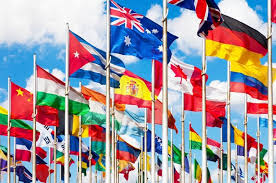Forging Alliances for Peace: Lessons from Successful Global Cooperation
In a world where conflict and division seem to dominate the headlines, it is vital that we recognize the power of global cooperation in fostering peace and unity. When nations come together, setting aside their differences and working towards a common goal, remarkable things can be accomplished. By studying successful examples of global collaboration, we can uncover valuable lessons that can guide us towards a more harmonious and united future.
-
The European Union: The EU stands as a shining example of how countries can forge alliances for peace. What began as a partnership focused on economic cooperation has evolved into a powerful union built on shared values and a commitment to resolving conflicts through diplomacy.
-
The United Nations: Established in the aftermath of World War II, the UN serves as a platform for dialogue and cooperation among nations. Its mission is to promote peace, human rights, and sustainable development worldwide.
-
The Paris Agreement: The signing of the Paris Agreement on climate change in 2015 demonstrated the power of global collaboration in addressing urgent environmental issues. By bringing together nearly every country in the world, this agreement represents a collective effort to combat climate change and protect our planet for future generations.
-
The Universal Declaration of Human Rights: Adopted by the UN General Assembly in 1948, the Universal Declaration of Human Rights is a testament to the potential of global cooperation in promoting basic rights and freedoms for all individuals.
-
The World Health Organization: The WHO plays a crucial role in coordinating international efforts to combat global health challenges. From eradicating diseases to responding to pandemics, this organization exemplifies the power of collaboration in saving lives and improving global health.
-
The African Union: By fostering unity and cooperation among African nations, the African Union has made significant strides in promoting peace, stability, and economic development across the continent.
-
The North Atlantic Treaty Organization (NATO): NATO serves as a military alliance dedicated to collective defense and cooperation among member countries. Through joint military exercises and shared strategic goals, this alliance has been instrumental in maintaining peace and stability in the North Atlantic region.
-
The G20: Comprising the world's major economies, the G20 is a forum for cooperation on global economic issues. By fostering dialogue and collaboration among these nations, the G20 aims to promote sustainable and inclusive economic growth.
-
The Antarctic Treaty System: The Antarctic Treaty, signed in 1959, sets aside Antarctica as a scientific preserve and prohibits military activities in the region. This agreement demonstrates the power of international cooperation in protecting fragile ecosystems and preserving natural resources.
-
The International Criminal Court: The ICC serves as a global institution for prosecuting individuals responsible for genocide, war crimes, and crimes against humanity. Its establishment represents a commitment to holding accountable those who perpetrate grave human rights abuses.
-
The World Trade Organization: As a platform for negotiating trade agreements and resolving trade disputes, the WTO promotes global economic integration and cooperation. Its rules-based system encourages fair and open trade, fostering economic growth and development.
-
The Nuclear Non-Proliferation Treaty: By seeking to prevent the spread of nuclear weapons and promoting disarmament, the Nuclear Non-Proliferation Treaty exemplifies global cooperation in ensuring international peace and security.
-
The International Space Station: The ISS is a remarkable example of international collaboration, with multiple nations coming together to explore the cosmos and push the boundaries of human knowledge.
-
The Kyoto Protocol: Building on the foundation of the UN Framework Convention on Climate Change, the Kyoto Protocol established binding targets for reducing greenhouse gas emissions. This global agreement demonstrates the potential of collective action in addressing climate change.
-
The International Red Cross and Red Crescent Movement: This humanitarian network, composed of national societies, promotes humanitarian principles, provides assistance to those in need, and works to prevent and alleviate human suffering worldwide.
By reflecting on these examples of successful global cooperation, we can see that peace and unity are not distant ideals but achievable goals. The lessons learned from these alliances provide a roadmap for promoting global cooperation and fostering a more harmonious world.
So, what can you do to contribute to global cooperation for peace and unity? Educate yourself about international issues, engage in dialogue with people from different cultures and backgrounds, support organizations working towards peace and unity, and advocate for policies that prioritize global cooperation. Together, we can make a difference and build a more peaceful and united world.
Join the conversation on global cooperation for peace and unity! Share this article and use the hashtags #GlobalCooperation #PeaceAndUnity. Together, let's forge alliances and create a better future for all.





